In this guide, you will learn how to use the invoke-command to execute PowerShell commands and scripts on remote computers.
Table of contents:
Let’s get started.
Invoke-Command Requirments
Before you can use the invoke-command the remote computer must have:
- The Windows Remote Management service must be running
- Allow Windows Remote Management in the Windows Firewall
In the next section, I’ll walk through how to enable this for multiple computers by using group policy.
By default, the Windows Remote Management service is not running and the firewall blocks the inbound connection. You can use group policy to control these settings on all domain-joined computers.
You can add these settings to an existing GPO or create a new GPO. In this example, I’ll create a new GPO.
1. Create or edit an existing GPO, I linked mine at the root of the domain and called it PSRemoting. Linking at the root of the domain will apply this GPO to all users and computers. You can link it to an OU to limit the scope.
2. Edit the GPO and navigate to Computer Configuration -> Windows Settings -> Security Settings -> System Services
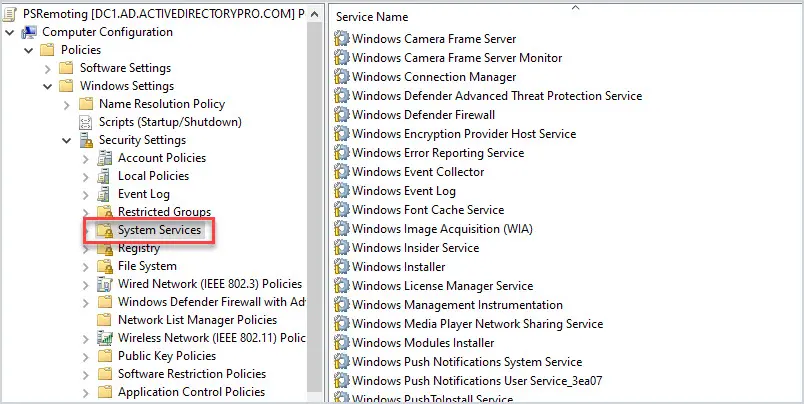
3. Select the Windows Remote Management (WS-Management) and set the service startup mode to Automatic.
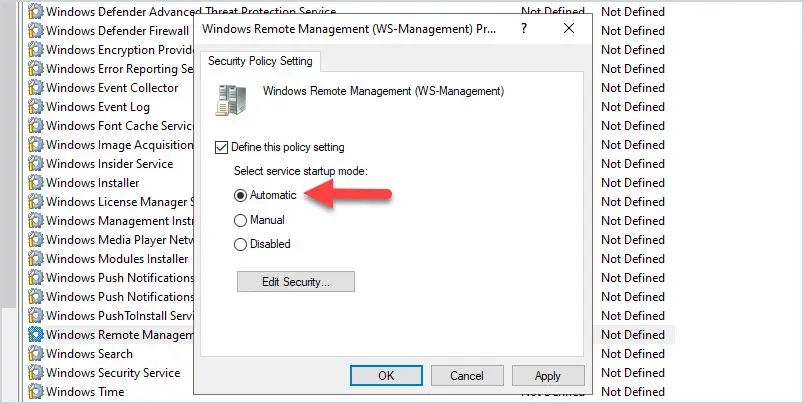
4. Navigate to Computer Configuration -> Windows Settings -> Security Settings -> Windows Defender Firewall with Advanced Security
5. Right-click on inbound rule and select “New Rule”
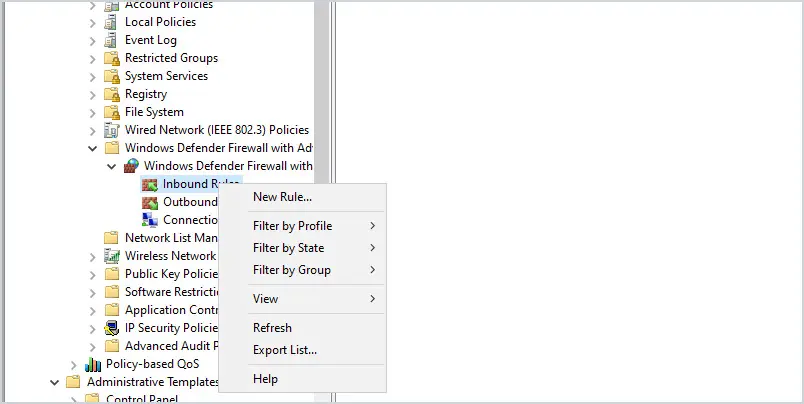
On the rule type screen select predefined and select “Windows Remote Management” then click Next.

Select the “Domain, Private” profile and uncheck the Public profile. Click Next

Select “Allow the connection” and click Finish
Tip: For security reasons, I recommend only allowing specific authorized computers to use PowerShell commands remotely. You can limit this by using the scope settings on the firewall rule. In the remote IP address section list the IP address of your computer or any other computer you want to allow.
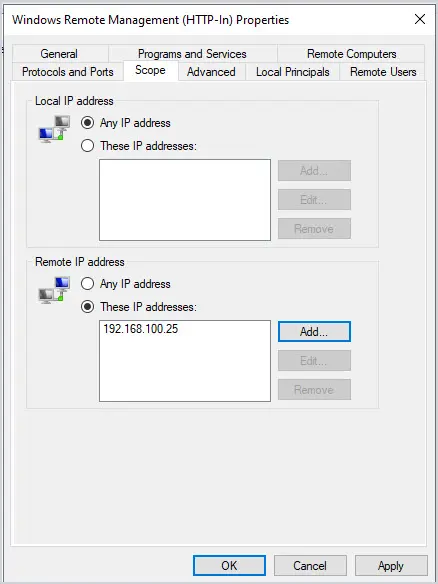
That completes the GPO settings.
6. Run gpupdate or Reboot Computer
Next, the remote computers need their policies refreshed to pull down the new GPO. They will get refreshed every 90 minutes on their own but to force a refresh run gpupdate on the computer. This will start the Windows Remote Management service and add the firewall rule on the remote computers.

Now I’ll check the services and firewall.

The service is now running.

The Firewall rule is added.
Invoke-Command Examples
Here are some examples of using the PowerShell invoke-command.
Example 1: Get services on a remote computer
The scriptblock parameter specifies the PowerShell command to run.
invoke-command -ComputerName pc1 -scriptblock {Get-Service} 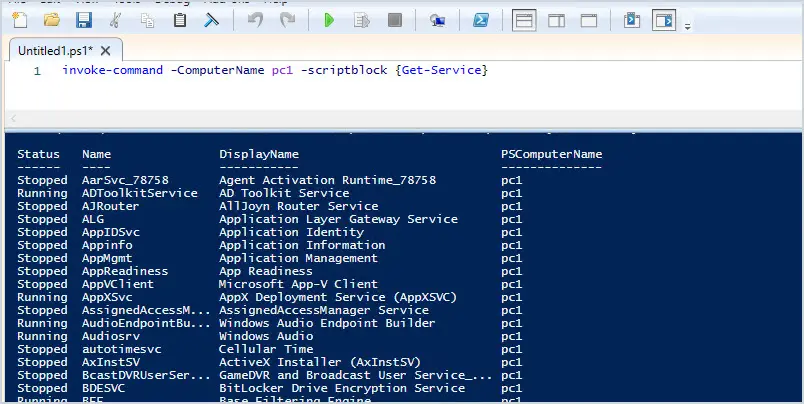
Example 2: Get services on multiple computers
To run PowerShell commands on multiple remote computers just separate them by a comma. You can use hostname or IP address.
invoke-command -ComputerName pc1, srv-vm1 -scriptblock {Get-Service} 
Example 3. Run a Script on a Remote Computer
This example will run getinfo.ps1 script on remote computers pc1 and srv-vm1.
Invoke-Command -FilePath c:\scripts\getinfo.ps1 -ComputerName pc1, srv-vm1Example 4: Get Windows Version on a Remote Computer
Use the systeminfo command to get the Windows version info from remote computers.
invoke-command -ComputerName pc1 -scriptblock {systeminfo} 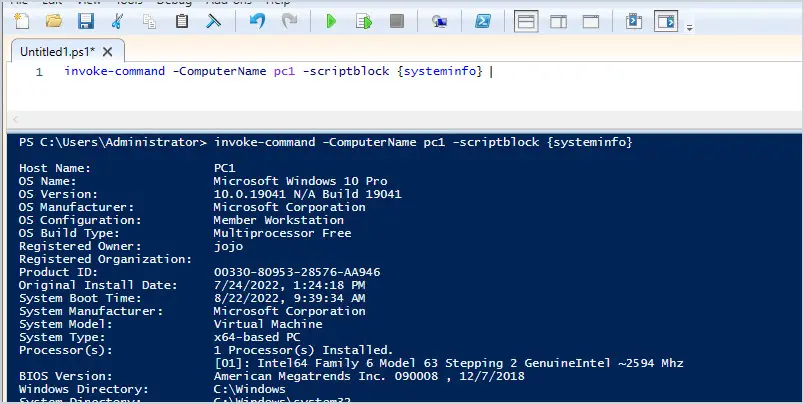
Example 5: Run commands on all computers from a text file
If you have a large list of computers you can put them in a text file. For example, I have a list of computers in a file called computers.txt.
Invoke-Command -ComputerName (Get-Content c:\it\computers.txt) -scriptblock {systeminfo}Example 6: Set Credentials
If the computer is in a different security context you may need to specify credentials.
$Credential = Get-Credential
Invoke-Command -ComputerName pc1 -Credential $Credential -ScriptBlock { Get-service}Example 7: Get Event Logs from Remote Computer
In this example, I’ll get event ID 4624 from a remote computer
invoke-command -ComputerName pc1 -scriptblock {Get-WinEvent @{logname='security';ID=4624} -MaxEvents 5}
Example 8: Get the PowerShell Version
This example will get the PowerShell version on remote computers
Invoke-Command -ComputerName pc1, srv-vm1 -ScriptBlock {$PSVersionTable.PSVersion}
Example 9: Run Multiple Commands
In this example, I’m running get-process and get-service on the remote computer.
Invoke-Command -ComputerName pc1 -ScriptBlock {(get-process), (get-service)}Hopefully, the above examples give you an idea of how to run PowerShell commands remotely. Check out the Microsoft invoke-command documentation to learn more.
An alternative to the invoke-command is the psexec command. The PsExec command is a lightweight utility that lets you execute processes on remote commands, it also lets you launch programs and interact with the console.
